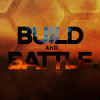3 hours ago, Hodgman said:Yeah that is the point. You've got some terrible "dynamic composition system" code and want to convert it to "ECS" code in a series of straightforward steps.
Please, please write that blog post! I'd really like to read about why "dynamic composition system" is terrible, what are the alternatives (I can think of some but most of them will not be as dynamic - is any dynamic one terrible or just the one presented in the video?). I, personally, am looking into a system for lower level functionality - physics, rendering, interest management, collision, animation - and not slapping it all into a single GameObject bag. I plan to have scripting for anything regarding in-game logic, hell, I can even hide hideous interface from C++ side under neat script interface so people can use it conveniently for higher-level code, but beneath the surface is neatly engineered C++ code.
Isn't it often the problem? That the code which performs horribly and follows bad patterns is usually easier to use for higher-level programming (so game logic etc) rather than having it well-engineered but requiring totally different way of looking at things? Less object-with-all-the-stuff-centric? I have no problem designing (I think) pretty good systems, following good practices, but where my skills fail me is designing a system for game objects that will work well - and not end up with inheritance crap, or forced everything-as-components, or any other religious crap. I'm just genuinely having a problem, because after all such object, built of all the bricks, IS EVERYTHING. It doesn't have a single responsibility, it's an object, which will become a freaking monster, player or a tree. So either there is something that totally turns it upside down, or we end up with systems we know are terrible, but they have the advantage of getting the job done, vs. ideal? To me, it's important that this system has a usable interface for end-user writing game logic, and not only follows all principles but is virtually unusable to write a logic code, which just has to do some job, and not be engineering masterpiece...












